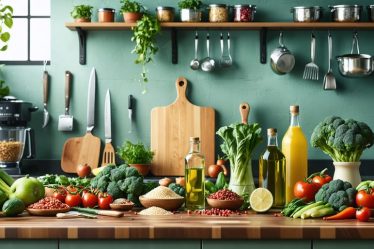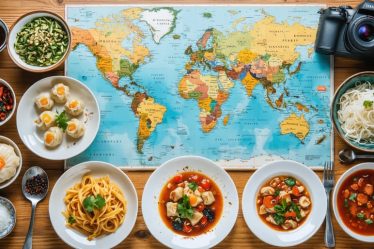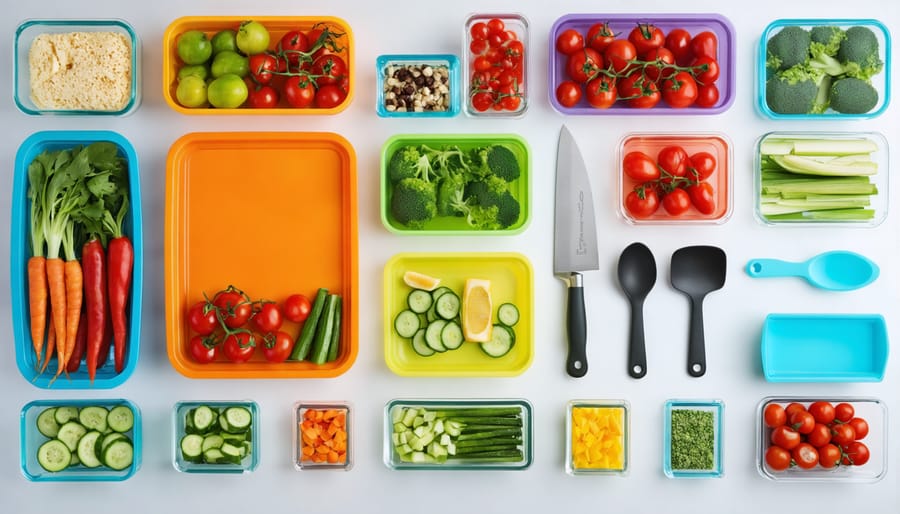
Transform your weeknight dinner chaos into a streamlined success story with strategic meal preparation. Picture this: opening your fridge to find perfectly portioned, ready-to-eat meals that save you time, money, and mental energy. That’s the power of meal prep – a game-changing approach that’s revolutionizing how busy professionals and parents tackle their weekly nutrition goals.
Gone are the days of 6 PM panic-ordering takeout or throwing together last-minute meals that leave you feeling unsatisfied. Whether you’re a seasoned home cook or just starting your culinary journey, meal prep offers a practical solution to the age-old question: “What’s for dinner?” By dedicating just a few hours each weekend to planning, preparing, and portioning your meals, you’re investing in a week of stress-free eating that aligns with your health goals and busy schedule.
But meal prep is more than just cooking in bulk – it’s a mindful approach to nourishing yourself and your family while reclaiming precious time during the week. In this guide, we’ll explore how to master the art of meal preparation, from essential planning strategies to time-saving techniques that make healthy eating effortless and enjoyable.
Why Smart Meal Prep Matters for Your Wellness Journey
Beyond Time Savings: The Real Benefits
While saving time is wonderful, the true magic of meal prep extends far beyond just faster weeknight dinners. When I started meal prepping, I discovered it was like having a secret weapon for better health. By planning ahead, you’re more likely to choose nutritious ingredients and control portion sizes, naturally leading to healthier eating habits.
The financial benefits are equally impressive. Remember those last-minute takeout orders and forgotten vegetables wilting in your fridge? Meal prep significantly reduces food waste and impulse food purchases. One of my readers shared how she cut her monthly food budget by nearly 30% after implementing a consistent meal prep routine.
Perhaps the most unexpected benefit is the mental clarity it brings. There’s something incredibly calming about knowing your meals are handled for the week. No more 6 PM panic about what to cook or guilty feelings about ordering delivery again. Instead, you get to enjoy that satisfied feeling of opening your fridge to find healthy, ready-to-go meals waiting for you. Plus, the actual process of meal prepping can become a peaceful Sunday ritual – your moment to reset and prepare for the week ahead.
Setting Yourself Up for Success
Success in meal prepping starts with the right mindset and a clear understanding of your lifestyle. Just like building any new habit, it’s essential to align your meal prep goals with your daily routine and personal preferences. Think of it as creating a sustainable relationship with your kitchen rather than embarking on a strict regimen.
Begin by identifying your “why” – whether it’s saving time, eating healthier, or reducing stress around mealtimes. This foundation will keep you motivated when challenges arise. Next, assess your schedule realistically. If you know you’re exhausted on Monday evenings, perhaps Sunday afternoon would be a better time for meal prep.
Developing mindful cooking habits can transform your meal prep experience from a chore into an act of self-care. Start small – perhaps prep just one meal type for the week, then gradually expand as you build confidence.
Remember, meal prep isn’t about perfection; it’s about progress. Create a flexible system that works for you, and don’t be afraid to adjust your approach as your needs change. The goal is to make your life easier, not add another source of stress to your plate.
Creating Your Personal Meal Prep Strategy
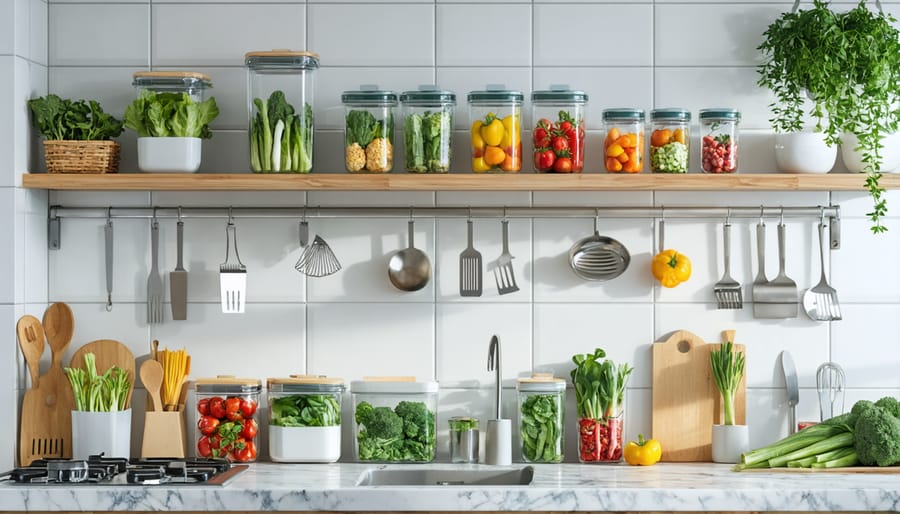
Your Essential Kitchen Setup
Let’s talk about setting up your meal prep sanctuary! Having the right essential kitchen tools and organization system can make all the difference between a stressful cooking session and a smooth, enjoyable experience.
Start with quality food storage containers in various sizes – I learned the hard way that those mismatched takeout containers just don’t cut it! Invest in a set of glass containers with leak-proof lids; they’re perfect for both storage and reheating. Trust me, your future self will thank you!
A sharp chef’s knife and a sturdy cutting board are absolute must-haves. I’d also recommend getting a set of measuring cups and spoons, a few good mixing bowls, and at least two large sheet pans for roasting vegetables and proteins.
Organization is key! Dedicate specific areas in your kitchen for prep work, cooking, and storage. Clear counter space is precious real estate during meal prep sessions. I keep frequently used items within arm’s reach and store lesser-used tools in higher cabinets.
Don’t forget about drawer organizers and shelf risers – they’re game-changers for maximizing cabinet space. And here’s a pro tip: label everything! From containers to shelf sections, clear labeling helps maintain order and makes grabbing ingredients a breeze.
Smart Shopping: Your Weekly Game Plan
Let’s be honest – walking into the grocery store without a plan is like going on a road trip without a map! I’ve learned (the hard way) that smart shopping is the foundation of successful meal prep, and I’m excited to share my weekly game plan with you.
Start by taking inventory of what you already have. Those forgotten items in the back of your pantry? They might be the start of next week’s meals! Then, plan your menu around seasonal produce and store specials – it’s better for your wallet and the planet.
Create your shopping list by category: produce, proteins, pantry items, and extras. This approach prevents those dreaded back-and-forth trips across the store. Pro tip: shop the perimeter first, where fresh ingredients live, before venturing into the middle aisles.
When selecting ingredients, think versatility. Choose items that can work in multiple meals – like chicken breast that can become Monday’s salad and Wednesday’s stir-fry. Look for produce at different ripeness stages so everything doesn’t need to be used immediately.
Don’t forget to check unit prices instead of package prices, and consider bulk buying for frequently used staples. Just remember – a “good deal” is only good if you’ll actually use it before it goes bad!
Most importantly, never shop hungry (trust me on this one!). A satisfied shopper makes smarter choices and sticks to the list.
Time-Saving Prep Techniques
Let me share a game-changing revelation from my own meal prep journey: it’s not about spending your entire Sunday in the kitchen – it’s about working smarter, not harder! The key to creating healthy homemade meals efficiently lies in mastering a few time-saving techniques.
Start with the “parallel cooking” method: while your quinoa simmers, roast vegetables on another rack, and marinate your proteins simultaneously. This approach can cut your prep time in half! I’ve found that investing in good quality storage containers and a sharp chef’s knife makes the whole process significantly faster and more enjoyable.
Batch cooking is your secret weapon. Instead of making one chicken breast, cook four. Rather than preparing a single portion of brown rice, make enough for three days. The beauty of this approach? You’re only cleaning up once!
Here are my favorite prep shortcuts:
– Chop vegetables for multiple meals at once
– Use sheet pan cooking for roasting different ingredients together
– Prepare versatile bases like grains and proteins that can be mixed and matched
– Keep pre-portioned seasonings in small containers
– Utilize your food processor for quick chopping and slicing
Remember, you don’t need to prep everything perfectly – even preparing just your proteins or chopping vegetables ahead can make weekday cooking much more manageable. Start small, find what works for you, and build from there.
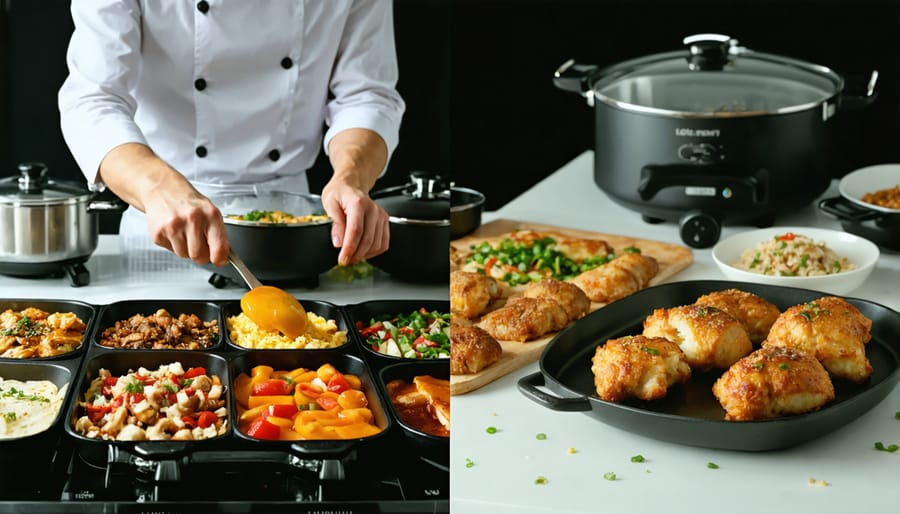
Making It Work in Real Life
Flexible Meal Planning That Fits Your Schedule
The beauty of meal prep lies in its flexibility – there’s no one-size-fits-all approach. I learned this lesson the hard way when I tried following rigid meal prep routines that just didn’t mesh with my dynamic schedule. The key is finding a system that works for you, and that might look different from what works for others.
Let’s explore some adaptable approaches to stress-free meal planning that can fit various lifestyles. If you’re someone who prefers to cook everything on Sunday, dedicate 2-3 hours to preparing meals for the week ahead. But if weekend meal prep sessions don’t suit your schedule, try the “2-2-3 method” – prep two meals on Sunday, two mid-week, and leave three meals for fresh cooking or flexible options.
Working late? Consider the “building blocks” approach. Instead of preparing complete meals, prep individual components like grilled chicken, roasted vegetables, and cooked grains. These can be mixed and matched throughout the week for different meals. Some weeks, you might only have time to chop vegetables and prepare marinades – and that’s perfectly fine!
For those with unpredictable schedules, try the “prep as you go” method. While cooking dinner, make extra portions of proteins or sides that can be used in tomorrow’s lunch. This approach requires minimal extra effort but still provides the benefits of meal preparation.
Remember, your meal prep routine can change from week to week. The goal isn’t perfection – it’s creating a sustainable system that makes your life easier while keeping healthy eating achievable.
Storage Solutions That Keep Food Fresh
Let me share a game-changing discovery from my own meal prep journey: investing in quality storage containers completely transformed how long my prepped meals stayed fresh. It’s not just about having containers; it’s about having the right ones for each type of food.
Glass containers with snap-locking lids are my go-to for most prepped meals. They’re perfect for hot foods, don’t retain stains or odors, and you can see exactly what’s inside. I particularly love them for storing roasted vegetables and cooked proteins, as they keep everything crisp and fresh for up to five days.
For salads and fresh produce, look for containers with built-in ventilation systems. These clever designs help regulate moisture and keep your greens crisp longer. A handy trick I’ve learned is to place a paper towel at the bottom of these containers to absorb excess moisture.
Mason jars aren’t just trendy – they’re fantastic for overnight oats, layered salads, and homemade dressings. The key is to layer ingredients properly: always keep wet ingredients separate from dry ones until you’re ready to eat.
When it comes to portion control, bento-style containers are a lifesaver. These compartmentalized containers keep different components of your meal separate, preventing sogginess and maintaining textures. Plus, they make it super easy to control portions.
Remember to always label your containers with both the contents and prep date. A simple piece of masking tape and marker works perfectly. And while it might seem obvious, always ensure your containers are completely cool before sealing them to prevent condensation, which can lead to soggy meals.
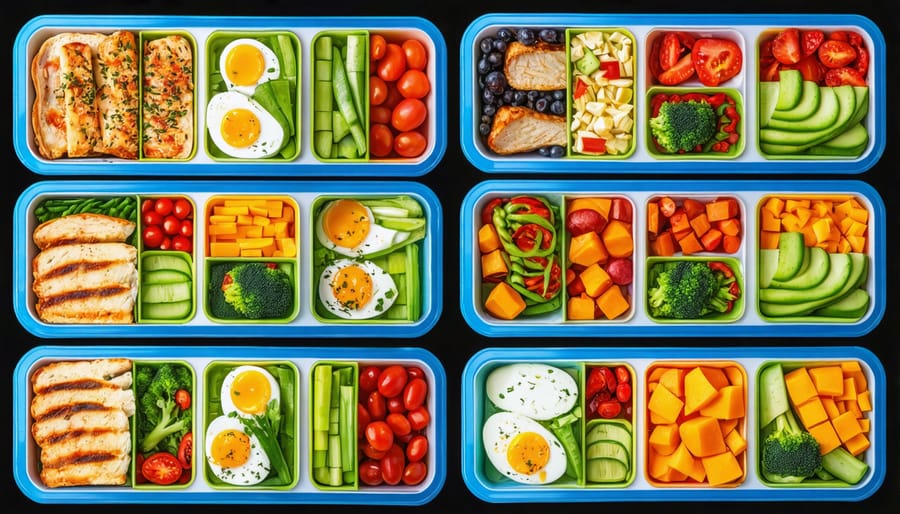
Avoiding Meal Prep Burnout
Let’s be honest – even the most dedicated meal preppers hit a wall sometimes. I remember my own breaking point: staring at yet another container of chicken and broccoli, wondering if this was my destiny forever. But here’s the good news: meal prep burnout is totally preventable with the right approach!
First, embrace the power of rotation. Instead of prepping the same meals every week, create a simple 3-4 week meal cycle. This gives you enough variety without overwhelming your planning process. Think of it as your personal restaurant menu that changes monthly!
Mix up your prep style too. Some weeks, prep complete meals; other weeks, just prepare ingredients. For instance, roast a variety of vegetables, cook two protein options, and prepare a grain base. This creates a “mix-and-match” system that keeps meals interesting while maintaining the convenience of prep.
Consider implementing theme nights – maybe Meatless Mondays or Taco Tuesdays – to add structure while keeping things fun. And don’t forget to treat yourself! Reserve one or two meals a week for spontaneous cooking or ordering in. This balance helps maintain your motivation for the long haul.
Remember to start small and build gradually. There’s no rule saying you must prep every single meal. Even preparing just your lunches for the workweek can make a significant difference in your routine while preventing that dreaded burnout feeling.
As we wrap up our meal prep journey together, I hope you’re feeling inspired and empowered to take this life-changing step. Remember, meal prep isn’t about achieving perfection – it’s about making your life easier, healthier, and more organized, one container at a time.
We’ve explored how meal prep can transform your weekly routine, save you money, and help you maintain healthier eating habits. Whether you start with just prepping breakfast for the week or diving into full weekly meal planning, every small step counts toward building a sustainable routine that works for you.
I still remember my first meal prep Sunday – I was overwhelmed and nearly gave up. But starting small and gradually building my confidence made all the difference. Now, it’s become a cherished weekly ritual that gives me peace of mind and more time to focus on what truly matters.
Don’t feel pressured to implement everything at once. Begin with what feels manageable – maybe chopping vegetables for the week or preparing a few overnight oats. As your confidence grows, so will your meal prep adventures.
Ready to start your meal prep journey? Remember: planning is key, keep it simple, and be patient with yourself. Your future self will thank you for taking this step toward a more organized, healthier lifestyle. Let’s make those busy weeknights a little less stressful, one prep session at a time!

